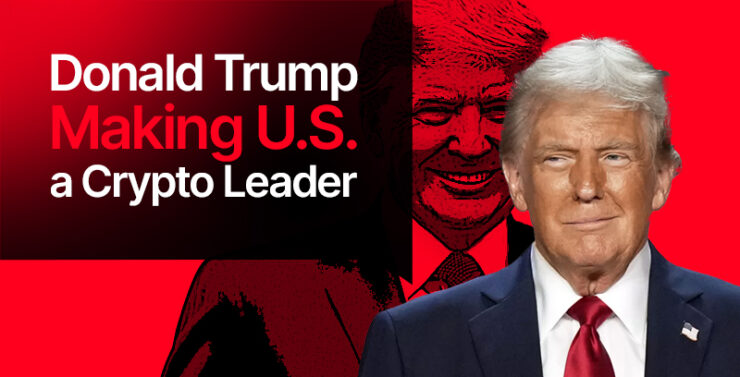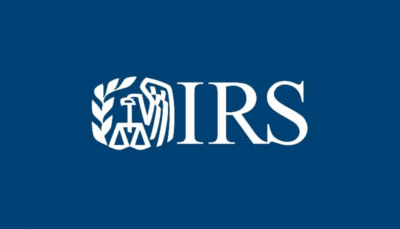In 2019, then-President Donald Trump dismissed Bitcoin and other cryptocurrencies as “not money” and “based on thin air.” Five years later, as he returned to the White House, he was no longer a skeptic. Instead, he positioned himself as a champion of digital assets, promising to transform the United States into the “crypto capital of the planet.”
Trump’s evolution on cryptocurrency policy has been swift and politically calculated. His administration’s early skepticism was reflected in the regulatory stance taken by agencies like the Securities and Exchange Commission (SEC), which cracked down on crypto firms under then-Chair Gary Gensler.
But by the time Trump launched his 2024 re-election campaign, he had embraced crypto as a core policy issue, promising regulatory clarity, industry-friendly policies, and direct federal investment in digital assets.
A Political and Financial Transformation
Trump’s shift from crypto critic to proponent was evident in both his rhetoric and personal investments. At the Bitcoin 2024 conference in Nashville, he pledged to ensure the U.S. government retained all Bitcoin it acquired, a departure from past practices of auctioning seized crypto assets.
His campaign also became the first by a major U.S. presidential candidate to accept cryptocurrency donations.
By the fall of 2024, Trump had deepened his involvement in the industry, backing World Liberty Financial (WLF), a new cryptocurrency venture co-founded by his son Donald Trump Jr. and entrepreneurs Chase Herro and Zachary Folkman. WLF’s token, $WLFI, reportedly raised $300 million in an initial sale. While Trump’s role was largely promotional, the project raised ethical concerns about conflicts of interest, especially given his presidential ambitions.
Trump’s personal crypto holdings also expanded. Reports indicated he held stakes in various tokens, including Ethereum and the Trump Coin ($TRUMP) memecoin, whose value surged and crashed amid speculation about his endorsements. The volatility surrounding $TRUMP raised questions about market manipulation, with critics arguing that Trump’s influence over policy and regulation could distort crypto markets to his benefit.
Executive Orders and Regulatory Shifts
Upon taking office in January 2025, Trump moved quickly to make good on his campaign promises. On January 23, he signed Executive Order 14178, titled “Strengthening American Leadership in Digital Financial Technology.” The order marked a stark contrast from the Biden administration’s regulatory approach and included several key provisions:
- National Digital Asset Stockpile: Trump directed a working group to evaluate the feasibility of a federal cryptocurrency reserve. Unlike previous administrations, which auctioned off seized Bitcoin, Trump proposed retaining these assets, potentially giving the U.S. government leverage over digital markets.
- Regulatory Clarity: The order established the President’s Working Group on Digital Asset Markets, chaired by newly appointed “crypto czar” David Sacks. The group was tasked with clarifying whether digital assets should be classified as securities, commodities, or a new asset class altogether.
- CBDC Ban: The order explicitly prohibited the development of a Central Bank Digital Currency (CBDC), citing concerns over privacy and financial sovereignty. Instead, Trump encouraged private-sector development of U.S. dollar-backed stablecoins.
- Industry Protections: The order sought to prevent banks from “de-banking” crypto firms, a practice that had drawn industry complaints under previous regulatory regimes. It also promised protections for Bitcoin miners and blockchain developers.
As part of his broader deregulation push, Trump appointed industry-friendly figures to key positions. Paul Atkins replaced Gary Gensler as SEC chair, while Scott Bessent took over as Treasury Secretary. These appointments signaled a shift toward a more permissive regulatory environment for digital assets.
Market Impact and Industry Reactions
The crypto market responded to Trump’s policies with enthusiasm. Bitcoin surged to an all-time high of $109,071 in January 2025 before stabilizing around $103,000. The broader market capitalization of digital assets climbed to $2.3 trillion, reflecting renewed investor confidence.
Yet, Trump’s embrace of crypto has not been without controversy. His administration’s decision to drop SEC investigations into major exchanges drew criticism from skeptics who saw it as a political favor to industry donors. Critics also pointed to the risks of a government-backed crypto reserve, arguing that such a policy could expose taxpayers to the market’s notorious volatility.
Molly White, a digital asset researcher, voiced skepticism about Trump’s motives. “Most people see this for what it is: an attempt to pump up crypto markets and benefit those who hold crypto, rather than benefit all Americans,” she said.
Others within the industry were divided. While some applauded Trump’s deregulation push, others worried about his administration’s selective support for certain projects. Jason Calacanis, a venture capitalist, labeled Trump’s crypto initiatives a “Trump Pump” designed to drive speculation rather than long-term stability.
Controversies and Conflicts of Interest
Trump’s deep ties to the crypto world have sparked concerns about conflicts of interest. His involvement with WLF and the $TRUMP memecoin raised ethical questions about how personal financial interests might shape policy. The lack of transparency surrounding his crypto holdings has also fueled speculation about potential market manipulation.
Further scrutiny emerged after the White House announced a crypto summit scheduled for March 2025. David Sacks, Trump’s handpicked crypto czar, was revealed to have previously held a stake in Bitwise, a major crypto investment firm. Though Sacks claimed he had divested his holdings before taking office, critics questioned whether the administration’s policies were unduly influenced by private-sector connections.
Adding to the controversy, Ripple, the company behind XRP, was among the largest donors to Trump’s 2024 campaign. When Trump later announced that XRP would be part of the government’s strategic crypto reserve, critics accused his administration of picking winners and losers in the market.
The Future of Trump’s Crypto Agenda
Trump’s vision for making America the “crypto capital of the world” hinges on continued legislative and executive action. His allies in Congress, including Senator Tim Scott, have introduced the FIT21 Act, which seeks to establish a clear legal framework for digital assets. Whether the administration can push such legislation through remains uncertain, particularly given resistance from fiscal conservatives wary of government involvement in volatile markets.
At the same time, global competitors are watching closely. Trump’s aggressive embrace of crypto could trigger a digital asset arms race, with other nations exploring their own government-backed crypto reserves. Some analysts warn that the move could backfire, undermining U.S. dollar dominance if major economies adopt similar strategies.
For now, Trump remains undeterred. “I will make sure the U.S. is the Crypto Capital of the World,” he declared on Truth Social. His administration’s approach to digital assets is already reshaping the industry—but whether it leads to sustained growth or economic risk remains an open question.





